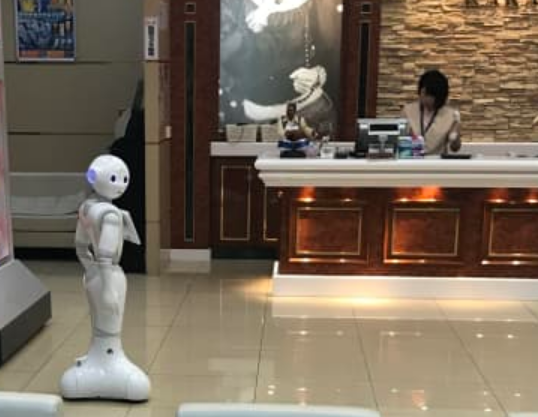- Ameya360 Component Supply Platform >
- Trade news >
- A.I. industry suffers from deep gender gap, World Economic Forum says
A.I. industry suffers from deep gender gap, World Economic Forum says

Getty Images
Artificial intelligence has permeated the technology universe with the promise of disrupting every industry, from health care and retail to transportation.
But a new report from the World Economic Forum suggests that the market developing around AI has certain problems that look a lot like the rest of the corporate world.
The WEF report released on Monday found that the AI workforce in the U.S. has a dramatic gender gap, with less than one-fourth of roles in the industry being filled by women.
"It is absolutely crucial that those people who create AI are representative of the population as a whole," said Kay Firth-Butterfield, WEF's head of artificial intelligence and machine learning.
Firth-Butterfield said that bias can enter the coding process, so a lack of diversity means "we're not actually reflecting the population and we have a huge problem."
The analysis found that the AI gender gap is three times larger than other industry talent pools, and women in AI are less likely to be positioned in high-profile senior roles.
In 2016, Microsoft released a chatbot named "Tay" on Twitter as an experiment in conversational learning. The experiment quickly ran into problems as Twitter users started tweeting at the bot with misogynistic and racist comments, and "Tay" started repeating that sentiment back to users. More recently, Google released a predictive text feature within Gmail where the algorithm made biased assumptions referring to a nurse with female pronouns. Google eventually stopped the feature from suggesting pronouns.
Firth-Butterfield also pointed to the fact that our most popular virtual assistants from Apple, Amazon and Google have female voices and are designed to serve and take orders.
Programmers "are replicating the fact that people who take calls in call centers tend to be women but we could create a different world with AI if we had more diverse teams creating [it]," she said.
Not all the benefits of diversity are immediately obvious, but the report says that changing the ratio will require proactive measures.
"When you bring more people into the field you get more creative outcomes," said Tess Posner, CEO of AI4All, a non-profit working to increase diversity in fields including artificial intelligence.
Firth-Butterfield and Posner both argue that companies with greater diversity perform better.
"We see that diversity improves innovation, and the technology itself," Posner said. If people from a variety of backgrounds are building AI systems, "it will better reflect society," she said.
Online messageinquiry
- Week of hot material
- Material in short supply seckilling
| model | brand | Quote |
|---|---|---|
| RB751G-40T2R | ROHM Semiconductor | |
| BD71847AMWV-E2 | ROHM Semiconductor | |
| CDZVT2R20B | ROHM Semiconductor | |
| TL431ACLPR | Texas Instruments | |
| MC33074DR2G | onsemi |
| model | brand | To snap up |
|---|---|---|
| BU33JA2MNVX-CTL | ROHM Semiconductor | |
| TPS63050YFFR | Texas Instruments | |
| IPZ40N04S5L4R8ATMA1 | Infineon Technologies | |
| STM32F429IGT6 | STMicroelectronics | |
| ESR03EZPJ151 | ROHM Semiconductor | |
| BP3621 | ROHM Semiconductor |
- Week of ranking
- Month ranking
Qr code of ameya360 official account
Identify TWO-DIMENSIONAL code, you can pay attention to


Please enter the verification code in the image below:























